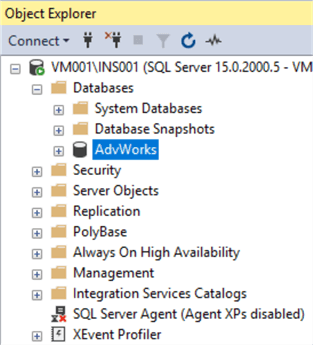

- #Cloudberry backup for ms sql server hangs on restore software#
- #Cloudberry backup for ms sql server hangs on restore Offline#
- #Cloudberry backup for ms sql server hangs on restore windows#
Locate the domain controller in the console, right-click it and choose Delete then Yes to confirm. The last clean-up step is to remove the computer account from Active Directory Sites and Services. Click Yes on that message to delete the object from AD. If the domain controller was also a Global Catalog (GC), you will get another warning message.
#Cloudberry backup for ms sql server hangs on restore Offline#
It is permanently offline and can no longer be removed using the removal wizard then click Delete. If you are sure this domain controller is permanently offline and you will never restore it from a backup, check the box Delete this Domain Controller anyway.
#Cloudberry backup for ms sql server hangs on restore windows#
To properly remove the Domain Controller from the domain, you should run the Remove Roles and Features Wizard in Server Manager, or the Active Directory Domain Services Installation Wizard (DCPromo) for Windows Server 2008 r2 or earlier. You are attempting to delete a Domain Controller without running the removal wizard. You will get a big warning message after hitting the Yes button (a little different in 2008 server): Under Windows Server 2003, this is a three-step process, which I’m not going to discuss it here. The metadata cleanup steps will be performed automatically if your domain controllers are running Windows Server 2008 or higher. To do that, open Active Directory Users and Computers, locate your failed domain controller and deleted the computer object from the Domain Controllers container.

As a last thing, before you promote the freshly installed server, the remnants of the old domain controller must be removed from Active Directory. Bear in mind, even tough this is an easy going process, in large environments with thousands of users it will create a lot of replication traffic, and this is something to take into consideration if the traffic is across a WAN link. The recovery is done by promoting a newly installed machine and allowing replication to copy all of the data to the DC. You can use this method only if you have multiple domain controllers in your environment, so the restored domain controller(s) can replicate from the existing ones. There are two options to choose from when restoring your domain controller(s): restore from replication or restore from backup. Even if you might be tempted recovering your failed domain controller(s) using one of this methods can have catastrophic results on the consistency of the directory as a whole like SID rollback, lingering objects and USN rollback.
#Cloudberry backup for ms sql server hangs on restore software#
Backing up virtual disks (for VMs) or using disk image software like Norton Ghost are specifically not supported for domain controller backups. Even if you have good backups somewhere on the shelf that’s only 50% of the job done, because as you’ll see later in the article, the way you recover a domain controller is way different from recovering file servers or application servers. This can happen due to a hard disk crash, a bad network card, file system corruption or corruption of the Active Directory database. Just when you think everything is going well, disaster happens, and one or more of your domain controllers gets offline.


 0 kommentar(er)
0 kommentar(er)
